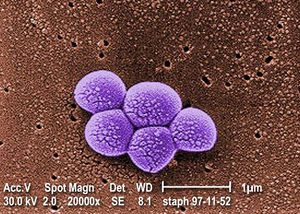Evolution of Mycobacterium Tuberculosis and Public Health
Section

By Alyssa Gest
Mycobacterium Tuberculosis (TB) is a species of pathogenic bacteria that is one of the world's leading bacterial pathogens. It is a gram-positive bacterium that attacks the lungs but can spread to other parts of the body and cause further damage to important organs. This includes lymph nodes, bones, kidneys, the brain, the spine and even the skin. From the lungs, the bacteria will move through the blood or lymphatic systems to reach other regions of the body. Although this bacteria is a pathogen, not everyone will experience symptoms who get infected. Those who have weaker immune systmes are more at risk for developing serious illnesses including young children and babies. Others with underlying conditions such as HIV, kidney disease, organ transplants, etc. are also at higher risk of death. It can be easily spread from person to person through the air and surfaces. They begin to colonize in the lungs through small air sacs and rapidly move through the low and small airways. They are very small, ranging from 0.2–0.5 µm wide and 2–4 µm long, allowing them to slip through the airways and move through the bloodstream.
The insertion code consists of:
Double brackets: [[
Filename: PHIL_1181_lores.jpg
Thumbnail status: |thumb|
Pixel size: |300px|
Placement on page: |right|
Legend/credit: Magnified 20,000X, this colorized scanning electron micrograph (SEM) depicts a grouping of methicillin resistant Staphylococcus aureus (MRSA) bacteria. Photo credit: CDC. Every image requires a link to the source.
Closed double brackets: ]]
Other examples:
Bold
Italic
Subscript: H2O
Superscript: Fe3+
Sample citations: [1]
[2]
A citation code consists of a hyperlinked reference within "ref" begin and end codes.
To repeat the citation for other statements, the reference needs to have a names: "<ref name=aa>"
The repeated citation works like this, with a forward slash.[1]
Section 1
Include some current research, with at least one figure showing data.
Every point of information REQUIRES CITATION using the citation tool shown above.
Section 2
Include some current research, with at least one figure showing data.
Section 3
Include some current research, with at least one figure showing data.
Section 4
Conclusion
References
Authored for BIOL 238 Microbiology, taught by Joan Slonczewski,at Kenyon College,2024
